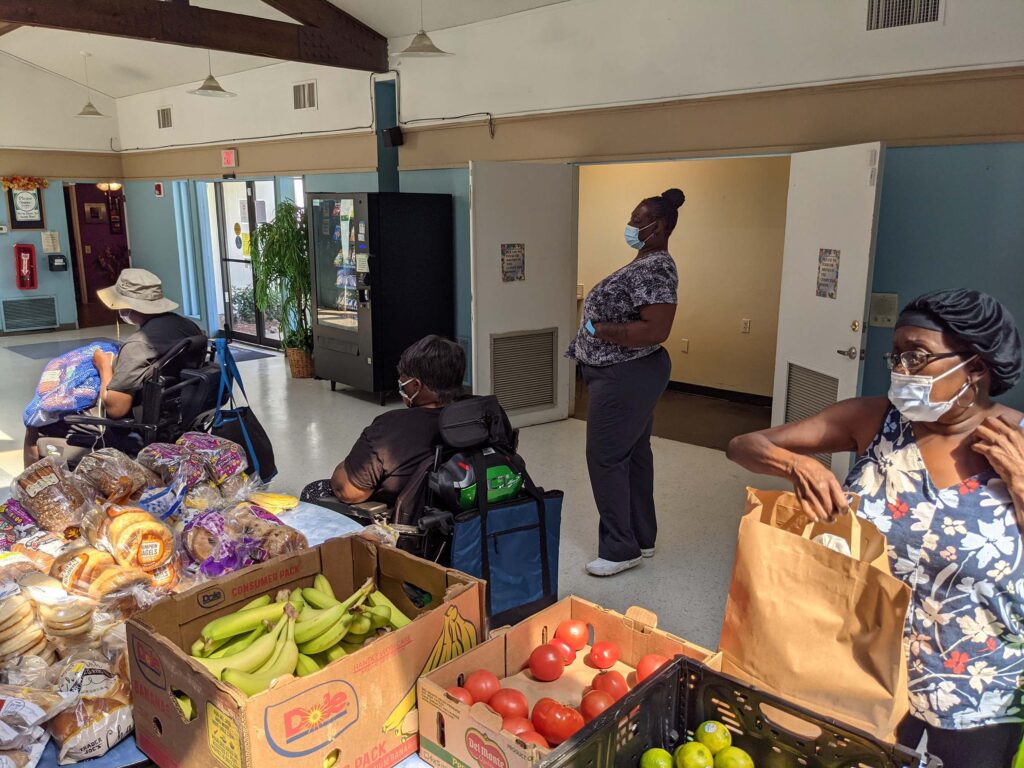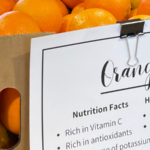4 minute read
Covid-19 did a number on people with food insecurity
If asked what the trending health issue was between 2020 and 2022 there’s no doubt the answer would be Covid-19. The economic impact after the lockdowns and the increased number of hospitalizations and deaths affected many Americans. Not to mention the impact globally on the supply chain, health, and travel.
There was a portion of the population, however, whose high health risk put them in greater danger during the Covid-19 pandemic.
Low-income communities.
The prevalence of diet-related illnesses in low-income communities was a leading comorbidity issue, the simultaneous presence of two or more diseases in a patient, among Covid-19 patients.
In this article:
- What is the background of diet-related illness in these communities
- What main factors are that lead to diet-related illnesses
- How the emergence of Covid-19 was worse for communities prone to these illnesses
- What solutions were offered and how can we prevent such high comorbidity rates in the future

First, a background
The Covid-19 pandemic only perpetuated health risks associated with diet-related diseases that have been present among low-income households with food insecurity for decades.
A study done in the early 2000’s among low-income households in counties across Arkansas, Louisiana, and Mississippi found that food insecure individuals have 2.4 times higher risk of diabetes and hypertension. And since the 70’s, mortality rates connected with cardiovascular disease (CVD) have declined, however, about 659,000 people in the United States still die from heart disease each year—that’s 1 in every 4 deaths [1]. Communities on the south side of Chicago (where the majority of the population represented is low-income African-Americans) made up “more than 50% of Covid-19 cases and nearly 70% of Covid-19 deaths [in Chicago city limits]…”
Why were infection and mortality rates in low-income communities so high?
What are the main factors?
First, the concept known as “social determinants of health” needs to be understood. Boiled down it is the “view that health and illness are not randomly distributed throughout human society neither are the resources to prevent illness and its effects [2].”
Where you are born, live, work, your age, and the systems around you that are in place to deal with illness determine health outcomes.

Before the pandemic began, socioeconomic circumstances made it less likely for them to have access to healthy food. Why? They live in a food desert, have a disability, or less income due to unemployment.
Furthermore, they may have learned poor health behaviors or have a poor social support system. Both contribute to stress and poor health.
The emergence of Covid-19 made things worse
These factors naturally cause or perpetuate food-related illnesses. Now add in the effects of a pandemic like unemployment, increase in cost of healthy food, decreased public transportation, and fear of going to hospitals or clinics (one study found a decline in “food related disease diagnosis during the pandemic without the indication of a fall in prevalence of these conditions [3]”).
The risk is substantial. Early on, researchers began developing studies that showed a substantial increase in risk of 2-to-3 fold for infection and hospitalization among patients with diabetes and CVD.
Increase nutrition access and empowerment
What can we do? We agree with Michael Thomsen, a professor of agricultural economics and agribusiness at the University of Arkansas, when he said, “COVID relief should place more focus on food assistance [4].”
We believe food-related disease comorbidity among Covid-19 patients was able to be addressed with proper food access and education, especially among low-income and underserved communities.

Access to proper nutrition is the powerhouse that fuels a healthy immune system, fights diabetes, hypertension, and CVD, and is the best long-term solution to keep people from hospitalization. And nutrition and cooking education empowers and equips families to cook and eat healthy.
Nutrition focused organizations did a number on Covid-19
Well Fed’s mission focuses on food access and nutrition education.
Our goal is easy access to healthy food and nutrition education and the results were extraordinary during the pandemic. We saw progress health outcomes in underserved communities. More people:
- Have the good health
- Have more energy
- And have more motivation to focus on other important areas of their lives like acquiring a job or maintaining their mental health.
Covid-19 restrictions are over but our work is not over
Comorbidities did not go away with the waning of the pandemic. Under-represented communities in Arkansas with people at high risk for comorbidities still exist.
- External threats such as viruses will always put them at risk
- Internal threats from diet-related illnesses will keep reeking havoc
There is hope for these communities and it starts with healthy food, it starts with organizations like ours.
Will you join us?
Get Involved
Sign up for our newsletter to see more like this
Subscribe





































